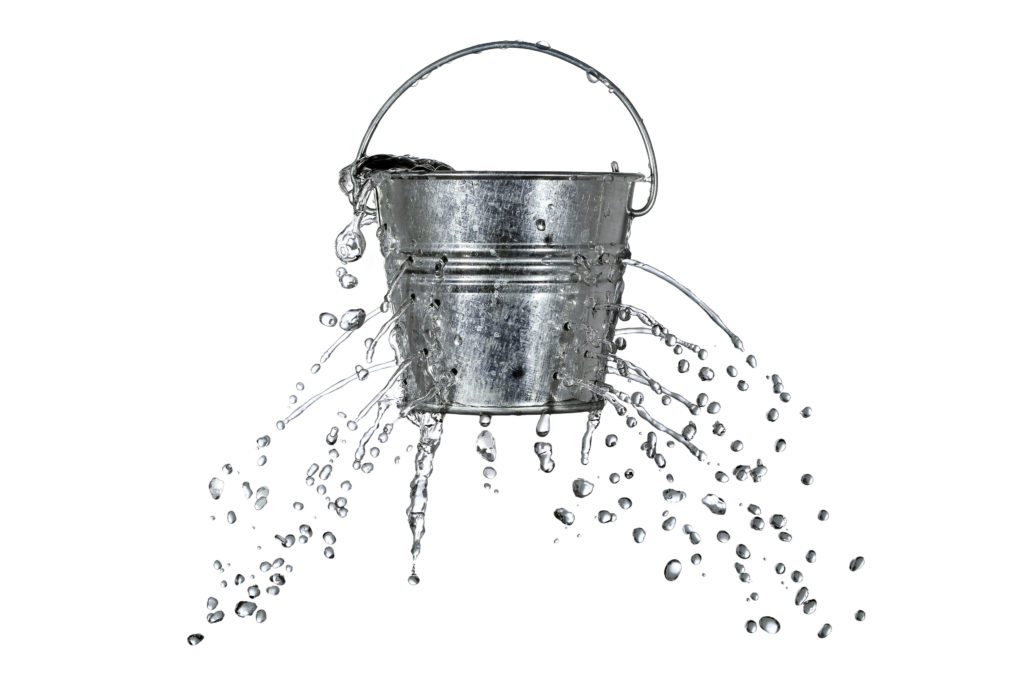Over the past two weeks I’ve seen a flurry of content related to donor retention. Is February the time of year when retaining your donors matters most?
Claire Axelrad, Roger Craver, Jeff Brooks and a whole host of other thought leaders drafted, edited and published content relating to donor retention. I wasn’t immune to this either. Here at Fundraising Report Card® we released a 2500 word guide and cheat sheet on donor and donation retention as well.
‘Tis the season?
What caused this spike in retention related content? It turns out that February isn’t “Donor Retention Month,” instead the increase in content was a result of more people sharing the somewhat recently published Fundraising Effectiveness Project’s 2016 report. This year’s FEP Donor Retention Supplement showed that donor retention slipped to 46.09% — a rather small drop from the previous year’s 46.63% donor retention rate, but a rather steep decline from 2009’s 50% mark.
The increase in content about “how to retain donors” and “why retention matters now more than ever,” made sense. I can only imagine that as donor renewal rates trend lower and lower, development staff are feeling more and more pressure to maintain and increase their own organization’s rates.
Yet, I have a hypothesis with a bit of a dim outlook to share: Retention rates will continue to decline. Not for lack of engagement, or “storytelling,” or saying “thank you,” but rather because more young people are becoming philanthropic.
My hunch is that millennials are ruining your donor retention and there isn’t much you can do a about it.
Get Data-Driven Email Updates
Millennials are charitable but they don’t stick around
I’ve written about this in the past. Millennials have an unbelievably short attention span. I should know, I am one (I’ve checked Twitter, Snapchat and Facebook 16 times while writing this blog post, as a for instance). Our general inability to concentrate has serious implications on our relationships, work and even charitable giving.
It’s important to note that millennials are the largest living generation, totaling over 80 million in the United States alone. There are a lot of people like me out there. We tend to be glued to our phones, obsessed with our Instagram likes and more concerned with the number of followers we have than pretty much everything else (sorry Mom, I’d love to make you dinner, but first let me take a selfie).
There are serious societal implications that stem from our behavior. Don’t take my word for it, there are plenty of others who are much more qualified that are attempting to shed light on this.
Yet, no matter our behavioral imperfections, we do tend to donate (#redemption). A 2014 report titled, The Millennial Impact Report, found that 87% of millennials donated in 2014. 91% of millennial women made charitable contributions as did 84% of millennial men.
That’s astounding! Yet also troubling…
As more of my peers (especially the younger and less affluent ones) become fiscally philanthropic they run the risk of diluting the metrics and statistics our industry uses to measure growth and performance.
Remember, at its core, retention rate measures how well you’re handling donor relationships . Of course this is something every organization can get better at, but when dealing with millennials you’re going to need some good fortune.
Most millennials simply don’t care enough to develop a relationship with your organization, at least not right now. We have a hard enough time maintaining relationships with our peers, let alone a nonprofit.
My generation is less brand-loyal than Generation X’ers. We simply are a tough group of people to engage with and build relationships.
So let’s circle back to the FEP Retention report. Remember, the recent chaos surrounding donor retention rates stemmed from the report’s finding of a continued decline in overall donor retention rates. But I wonder what the report would show if it were segmented by generation? Are baby boomers being retained at 46%? I sure hope not.
Unfortunately more granular industry metrics like these do not exist (this is something we are working on producing here at Fundraising Report Card®, though). And ultimately this void of information leads to the response we saw over the past few weeks.
Big, generalized metrics can be informative (and indeed they are, especially in the case of the FEP report, or the Blackbaud Institute’s Charitable Giving Report, and even our own Fundraising Report Card® Live Benchmarks — they all contain a lot of amazing material), but they can also be mystifying. The response we’ve seen from thought leaders, fundraisers and nonprofit professionals throughout the industry is well intentioned but potentially misguided.
My argument that millennial retention is the root cause of lower industry retention rates is based solely on “gut feel.” Which is ironic because this blog frequently (if not exclusively) proposes data driven analysis and decision making. But until our industry creates segmented benchmarks it will be hard to know for sure what is causing the general decline in retention rates. This is simply my “two cents.”
That being said, there is one way to gather more clarity after the release of the FEP’s report — benchmark your organization’s retention rates against yourself.
One of the most effective ways to measure your organization’s retention performance is to compare current donor and donation retention rates to historical rates. Industry averages might be at 46%, down from 50% in 2009, but what about your nonprofit? Are you up 4% since in 2009? If so, give yourself a pat on the back.
I hope I am wrong. I hope donor retention rates increase next year, and the year after that. Unfortunately I don’t see it happening.
